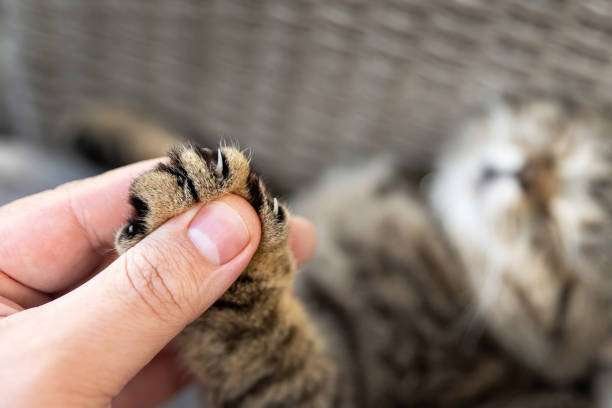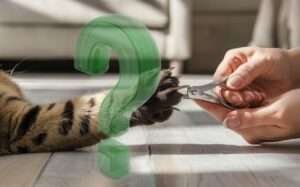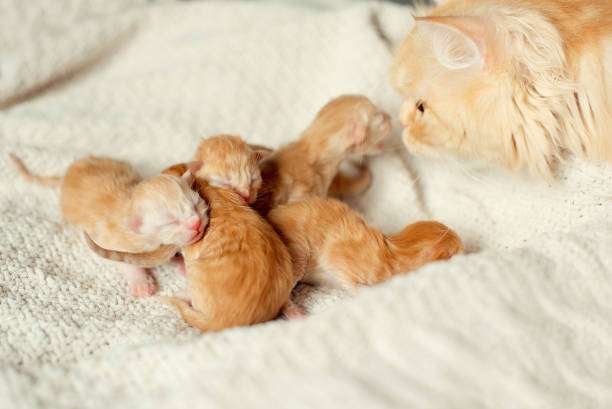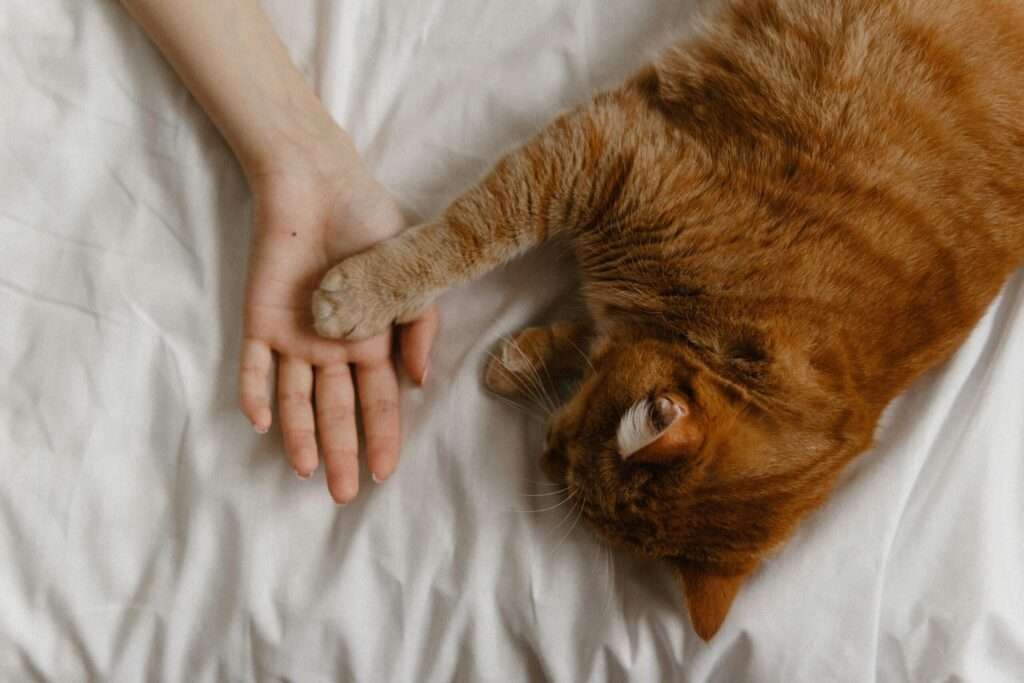Declawing a cat is a deeply divisive topic among pet owners, veterinarians, and animal welfare advocates. This procedure, known as onychectomy, has been a subject of intense debate due to its ethical implications and impact on a cat’s health and well-being. This article aims to provide a detailed overview of declawing, including what the procedure entails, its controversies, and alternatives for managing scratching behavior.
Table of Contents
ToggleWhat Is Declawing?
Declawing, or onychectomy, is the surgical removal of the last bone of each digit on a cat’s front paws. This procedure is often misunderstood, with some comparing it to amputating the tips of a human’s fingers. In reality, declawing involves more than just removing the nails; it includes the removal of the entire first digit of each toe, making it a significant and invasive surgery.
Declawing is performed under general anesthesia, and the vet uses a scalpel, laser, or surgical scissors to remove the bone and soft tissue. This results in a procedure that affects not just the claws but the entire digit, similar to amputating the tips of human fingers including the bones.
Why Do People Declaw Cats?
Declawing is generally considered when cat owners face persistent scratching issues. Cats have a natural instinct to scratch surfaces as part of their grooming behavior, to mark territory, and to stretch their muscles. When this scratching becomes problematic—damaging furniture, walls, or upholstery—some owners resort to declawing as a last resort after other measures have failed.

Controversies and Ethical Concerns
Declawing is highly controversial for several reasons:
- Pain and Recovery: Declawing is a painful procedure with a lengthy recovery period. Post-surgery, cats often experience immediate pain and can have chronic discomfort. The procedure can alter a cat’s gait and cause long-term joint and spine issues, as they are forced to walk differently without their claws.
- Behavioral Changes: Declawed cats may exhibit significant behavioral changes. Without claws, cats lose a crucial means of defense, which can lead to increased aggression or biting. Behavioral issues often arise because the cat feels vulnerable and lacks its natural means of self-defense.
- Health Issues: Declawing can lead to various health problems. The removal of claws can result in arthritis, lameness, and phantom pain. Some cats experience phantom pain, similar to the sensation felt by human amputees, where they may gnaw at their paws or shake them in discomfort.
- Litter Box Problems: Post-surgery, declawed cats might avoid using the litter box due to the pain associated with digging in the litter. This can lead to inappropriate elimination, where the cat may urinate or defecate outside the litter box due to discomfort.
Legal and Ethical Considerations
The ethics of declawing are widely debated. Many argue that it is an inhumane procedure because it removes a natural part of a cat’s anatomy and can cause significant pain and suffering. The procedure is banned or restricted in many countries and regions due to these concerns.
As of 2024, declawing is banned in over 42 countries, including Canada and the UK. In the United States, several states and cities have passed legislation to prohibit the procedure. For instance, New York became the first state to ban declawing, and other states like Massachusetts, Nevada, Rhode Island, Arizona, and Connecticut are pushing for similar legislation. Additionally, cities such as Los Angeles, San Francisco, and Denver have enacted local bans.
Alternatives to Declawing
Before opting for declawing, it is crucial to explore alternative solutions for managing a cat’s scratching behavior. Here are some humane alternatives:
- Scratching Posts: Providing multiple scratching posts or pads in various textures and locations around the home can encourage cats to scratch in appropriate places.
- Nail Trimming: Regular nail trimming helps reduce the damage caused by scratching. Keeping your cat’s nails short can minimize the impact on furniture and other surfaces.
- Soft Paws: Soft Paws are plastic nail caps that can be glued to your cat’s claws to prevent damage without harming the cat. They need to be replaced periodically as the cat’s nails grow.
- Behavioral Training: Training your cat to use scratching posts and rewarding positive behavior can effectively redirect their scratching habits. Positive reinforcement methods can encourage cats to scratch where they are supposed to.
Recent Studies and Findings
Several studies have highlighted the negative effects of declawing, further fueling the debate against the procedure:
- A 1998 study by Jankowski reported that up to 50% of declawed cats developed acute complications, and 20% experienced long-term issues such as lameness, wound breakdown, and nail regrowth.
- Research published in the Journal of the American Veterinary Medical Association (AVMA) in 2001 found that 33% of declawed cats suffered at least one behavioral problem post-surgery. Notably, 17.9% showed increased biting frequency, and 15.4% refused to use the litter box.
- A survey by Morgan and Haupt indicated that declawed cats had a 40% higher incidence of house soiling compared to non-declawed cats. Another study by Borchelt and Vois found that declawed cats were more likely to exhibit aggressive behavior, including biting family members.
- A 2018 study from the British Columbia SPCA analyzed data from 74,587 cats before and after a declawing ban and found no significant increase in shelter surrenders or euthanasia rates related to destructive scratching. The ban led to a decrease in cats entering shelters and reduced the time they spent waiting for adoption.
Moving Forward
As the awareness of the issues surrounding declawing grows, more legislation is being introduced to ban or restrict the procedure. The American Veterinary Medical Association (AVMA) has revised its position on declawing, stating it should be discouraged and only performed as a last resort. However, the language has not yet evolved into a full ban, leaving room for improvement.
For those who have already declawed their cats, understanding the potential long-term effects and seeking ways to alleviate discomfort is crucial. For those considering declawing, exploring humane alternatives and consulting with veterinarians about the best ways to manage scratching behavior is essential.
In conclusion, declawing remains a contentious issue with significant ethical and health implications. By staying informed and exploring alternative methods, pet owners can make decisions that prioritize the well-being of their feline companions.
Understanding Declawing Cats: 10 FAQs
1. What is Declawing?
Declawing, or onychectomy, is the surgical removal of the last bone of each toe in a cat’s front paws.
2. Why Do Some People Choose to Declaw Their Cats?
People often declaw their cats to prevent scratching damage to furniture and belongings.
3. Is Declawing the Same as Removing a Cat’s Claws?
No, declawing involves amputating the last bone of each toe, not just removing the claws.
4. What Are Some Potential Health Issues After Declawing?
Declawed cats may experience pain, arthritis, phantom pain, and issues with their gait and balance.
5. Does Declawing Affect a Cat’s Behavior?
Yes, declawing can lead to increased biting and behavioral changes due to the loss of their primary defense mechanism.
6. Are There Alternatives to Declawing?
Yes, alternatives include using scratching posts, regular nail trimming, soft paws, and behavioral training.
7. Is Declawing Banned Anywhere?
Yes, declawing is banned in over 42 countries and various states and cities in the United States.
8. What Did Recent Studies Reveal About Declawing?
Studies have shown that declawing can lead to health issues, behavioral problems, and increased likelihood of house soiling.
9. How Can Declawing Impact a Cat’s Use of the Litter Box?
Declawed cats may avoid the litter box due to discomfort from scratching in the litter.
10. What Is the Current Stance of the American Veterinary Medical Association on Declawing?
The AVMA discourages declawing and recommends it only as a last resort after all other measures have failed.





